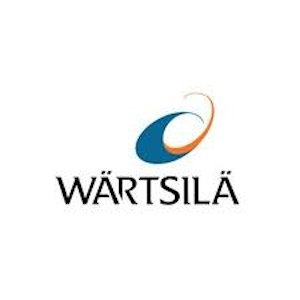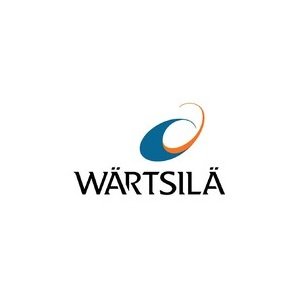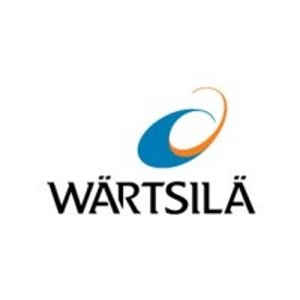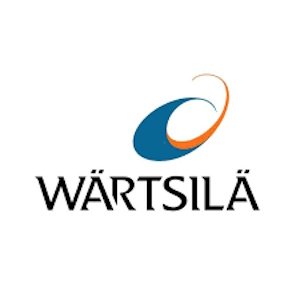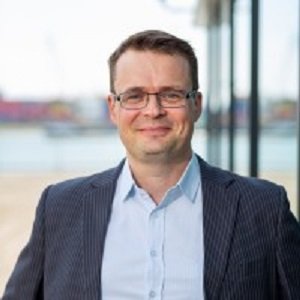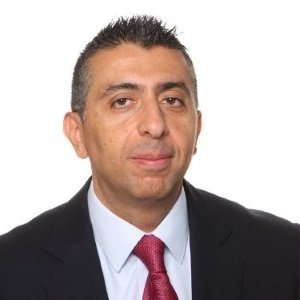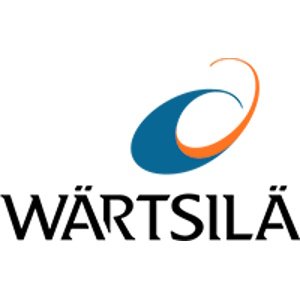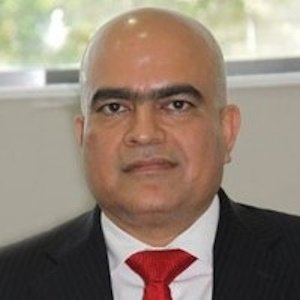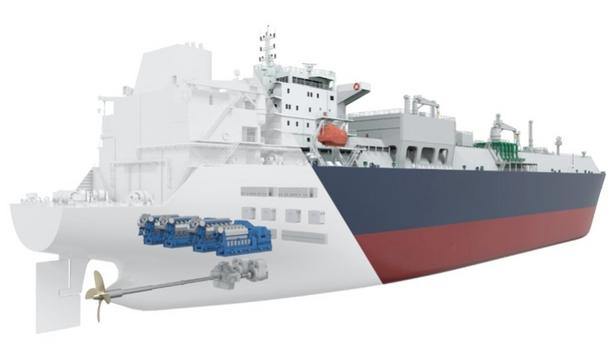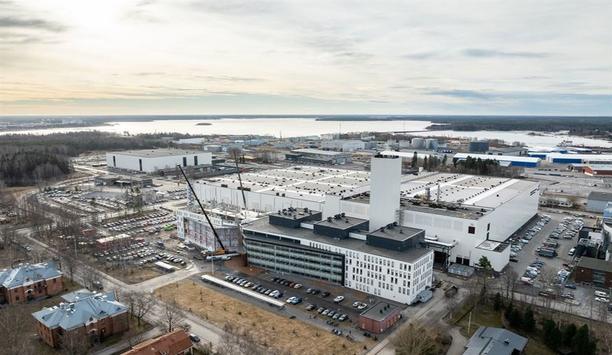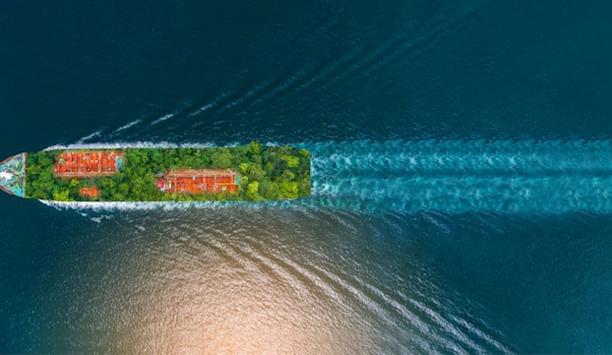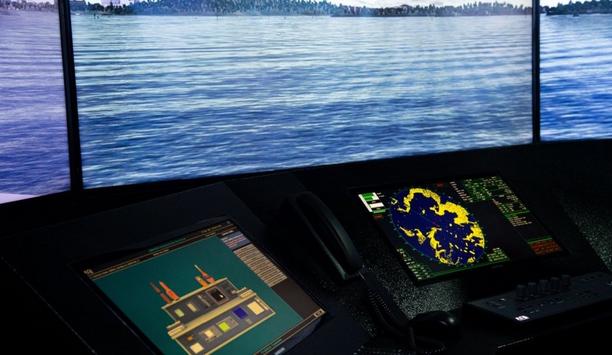Wärtsilä Corporation - Experts & Thought Leaders
Latest Wärtsilä Corporation news & announcements
Technology group Wärtsilä has introduced a new methane slip reduction solution for its Wärtsilä 50DF dual-fuel engine. The new technology, which converts Wärtsilä 50DF dual-fuel (DF) engines to spark gas (SG) operation, enables a more optimised combustion process, thereby improving efficiency and lowering methane emissions. Wärtsilä 50DF engine Whilst operating on LNG, the new ‘Spark Gas Conversion for Wärtsilä 50DF’ is designed to reduce methane emissions up to 75 percent more than the standard Wärtsilä 50DF engine. The Spark Gas Conversion for Wärtsilä 50DF minimises methane emissions by introducing an electrically controlled pre-combustion chamber valve for a more optimised combustion process. Use of LNG and cutting methane emissions New solution reduces methane emissions down to 1.1 percent of fuel use The estimated result is that, on an IMO weighted (E2-cycle) average, the new solution reduces methane emissions down to 1.1 percent of fuel use. “The use of LNG and cutting methane emissions is one of the most effective ways to decrease overall greenhouse gas (GHG) emissions from marine engines over the next decade, complementing other efforts to reduce CO2 emissions,” comments Roger Holm, President of Wärtsilä Marine & Executive Vice President at Wärtsilä Corporation. “As the shipping industry strives for more sustainable operations, this new solution represents an important milestone on the road to advancing lower carbon fleets.” Chevron LNG Carriers The development of the solution, which consists of converting one-to-two of the total DF engines to SG, was made possible through extensive collaboration between Wärtsilä and Chevron Shipping Company. It was announced earlier that one engine on six Chevron LNG Carriers will be converted from DF to SG as part of Chevron’s aim to reducing the carbon intensity of its operations. Lower methane emissions The new solution is optimised for LNG as fuel, thus producing a better power work per unit of fuel The solution is now available to all vessels in the industry with existing Wärtsilä 50DF engines diesel-electric propulsion, the majority of which are LNG carriers. The new solution is optimised for LNG as fuel, therefore producing a better energy output per unit of fuel. This means fuel gas savings of up to 4.6 percent, as well as lower methane emissions. LNG-fuelled engines Holm continues: “Wärtsilä has an extensive track-record in reducing methane slip from LNG-fuelled engines, not only as newbuild solutions, but also through retrofitting existing installations. This latest technology complements our extensive portfolio of solutions aimed at reducing methane emissions from vessels.” With three decades of experience in LNG technology, Wärtsilä is providing market-pioneering performance-both with the dual fuel flexibility provided by the DF engine, as well as with the single fuel SG engine.
Technology group - Wärtsilä is set to expand its state-of-the-art technology centre - Sustainable Technology Hub in Vaasa, Finland, with a €50 million total investment. Expanding the R&D testing capabilities and facilities will enhance Wärtsilä’s ability to meet the growing demand for developing and delivering sustainable technologies in marine and energy and to support fuel applications needed in the future. Smarter engine development Wärtsilä also anticipates this investment to accelerate product development and time to market Wärtsilä also anticipates this investment to accelerate product development and time to market, reduce testing time and costs, cut test-related emissions, and create potential for future growth of manufacturing capacity and volumes at the Sustainable Technology Hub. The nearly 8,000 square metre extension is expected to be commissioned in 2028. “The widely adopted target of reaching net zero in our industries in marine and energy around 2050 is the lifespan of a single vessel or power plant away. Thus, the technology decisions for new assets are being made now. It is therefore crucial for our customers that our solutions are fuel flexible and capable of running on sustainable fuels once these become more broadly available.” “This new investment in the Sustainable Technology Hub and new R&D testing capabilities will strongly support us in developing engines that can flexibly run on low- and zero-carbon fuels such as ammonia, hydrogen, and methanol. These technologies and related services help our customers reduce emissions, improve efficiency, and lower costs," says Juha Kytölä, Director, R&D and Engineering, Power Supply. Driving green transformation Since its opening in 2022, Wärtsilä’s Sustainable Technology Hub in Vaasa has played a pivotal role in shaping decarbonisation of the marine and energy industries. The technology centre has a unique approach to collaboration and innovation, involving Wärtsilä experts, customers, technology partners, academia, and the surrounding ecosystem. All Wärtsilä portfolio engines are manufactured in the technology centre, which also houses a training centre and one of Wärtsilä’s remote monitoring centres serving customers globally. Centralising operations Spanning currently a total of 90,000 square meters, the technology centre serves as a workplace for over 2,000 employees. The Sustainable Technology Hub welcomes around 1,000 visitors each month, including customers, partners, and influential decision-makers. In June 2024, Wärtsilä announced its plans to expand the Sustainable Technology Hub with an additional office building to centralise all 3,600 Vaasa-based Wärtsilians into the same location in 2026. Energy-efficient innovation The Sustainable Technology Hub is a critical component of Wärtsilä's goal to achieve carbon neutrality in its own operations by 2030. The building is designed to be energy self-sufficient, providing its own electricity and heat. Any excess power generated is returned to the grid, while the heat produced by engine tests and other processes is captured and stored in a thermal energy storage tank to efficiently heat the building.
Technology group Wärtsilä has signed a five-year Lifecycle Agreement with Finland based Viking Line covering the ferry M/S Viking Glory. The vessel has been supported by an earlier Wärtsilä agreement since its launch in 2021, and this renewal further extends and expands the partnership and benefits provided by the agreement. This latest order was booked by Wärtsilä in Q1 2025. Decarbonisation strategy The agreement is designed to minimise unscheduled maintenance and ensure performance reliability The equipment covered by the agreement includes the ship’s six Wärtsilä 31DF dual-fuel engines, six Wärtsilä Gas Valve Units (GVU’s), and two Wärtsilä LNGPac fuel storage and supply systems. The agreement is designed to minimise unscheduled maintenance and ensure performance reliability, while providing cost predictability for budgeting purposes. “We already have two ferries covered by Wärtsilä agreements, and we have been extremely pleased with the service and support they deliver. The Viking Glory is one of the most environmentally sustainable vessels sailing today, and by maintaining the equipment we ensure efficiency of its operations. The Wärtsilä agreement represents an important contribution to improve the reliability, and this help us on our decarbonisation strategy,” says Mathias Sundberg, Technical Manager – Viking Line. Predictive Maintenance The scope of the agreement includes maintenance planning, operational support, spare parts and services for the equipment covered, and a ‘one point of contact’ through the contract manager. It also includes Wärtsilä’s unique Expert Insight digital predictive maintenance service. Delivered through Wärtsilä’s global Expertise Centres, Wärtsilä’s Expert Insight leverages AI technology to identify potential failures before they occur, thus helping to improve asset efficiency and reduce both operating costs and emissions. Commitment to sustainability “We are delighted to renew and extend our collaboration and support for the Viking Glory and to continue our strong relationship with Viking Line. Both our companies are committed to decarbonising shipping operations, and these agreements play an important role in this. By ensuring the highest levels of operational efficiency, Viking Line can continue its great work in minimising the environmental impact of its operations,” comments Henrik Wilhelms, Director, Agreement Sales, Wärtsilä Marine. Wärtsilä-powered ferries Both the Viking Grace and Viking Glory are supported by Wärtsilä Lifecycle Agreements. The Viking Grace was the first ferry to operate with dual-fuel engines, enabling it to operate with LNG fuel. The Viking Glory operates with the highly efficient Wärtsilä 31DF dual-fuel engine, which delivers the best fuel economy of any engine in its class. Both ferries operate between Finland and Sweden.
Insights & Opinions from thought leaders at Wärtsilä Corporation
The shipping industry is currently navigating a profound transformation driven by environmental concerns, new emissions targets, and evolving regulations. As vessel owners and operators seek to reduce emissions while remaining competitive, determining the right strategy has become increasingly complex. Factors such as alternative fuel availability, fluctuating prices, and an ever-expanding range of technological solutions have made decision-making anything but straightforward. Lack of motivation Regulations evolve, technologies persist to advance, and can differ greatly from port to port The complexity arises from the many moving parts of the industry. Regulations evolve, technologies continue to advance, and infrastructure can differ greatly from port to port. For vessel owners committed to reducing their environmental impact, the challenge isn’t a lack of motivation, it’s finding the most effective way to navigate the myriad of options available. Hybrid propulsion systems One method gaining traction is data-driven decision-making through digital modelling. Rather than making decisions based on guesswork, digital modelling allows owners and operators to create a detailed representation of a vessel and simulate the performance of different strategies or technologies over its lifetime. That way, they can ‘test’ these approaches before committing large investments—particularly useful when considering new fuels or hybrid propulsion systems that are still maturing. Decarbonisation Modelling Service Digital modelling accounts for variables such as vessel speed, power needs, and route patterns Digital modelling accounts for variables such as vessel speed, power needs, and route patterns, applying machine-learning algorithms to find the most promising design or retrofit. It can also show how ideas might evolve if regulations tighten, or new fuels become more practical. At Wärtsilä, our Decarbonisation Modelling Service is designed to guide shipowners and operators through this maze of choices. In developing this tool, we have observed that shipowners required more than an “off-the-shelf” solution. They needed insights based on their own operational data, combined with practical knowledge of costs and likely regulatory trends. Benefits of digital modelling One of the main benefits of digital modelling is its flexibility. Depending on an owner’s goals, whether that’s meeting today’s regulations or planning for future mandates, they can explore multiple options. A fleet operator might compare installing hybrid batteries versus retrofitting for LNG or consider alternative fuels such as ammonia and methanol, or carbon capture. These simulations can factor in fuel prices, available bunkering infrastructure, and even unexpected events like global supply chain disruptions or future carbon taxes. Ship’s actual operational profile At Wärtsilä we often liken digital modelling as the closest thing to a crystal ball At Wärtsilä we often liken digital modelling as the closest thing to a crystal ball. While it isn’t perfect, it significantly improves our ability to make informed decisions and maintain flexibility as market conditions or regulatory landscapes shift. Consider, for instance, a mid-sized container ship operating in Asia. The owner, eager to lower CO2 emissions, might be unsure whether to retrofit for LNG immediately or wait for ammonia infrastructure to mature. Using a digital model based on the ship’s actual operational profile, we can test both scenarios—evaluating fuel price trends, port facilities, and the vessel’s remaining service life. Adopt an interim strategy If the model indicates that an LNG retrofit offers a promising return on investment along with moderate emissions cuts, the decision becomes clearer. Alternatively, if the potential for ammonia becomes evident sooner, it might be wiser to adopt an interim strategy or consider dual-fuel engines. It’s important to recognise that decarbonisation is not merely a box-ticking exercise to meet current regulations; it is a dynamic, ongoing process. With tightening rules from bodies like the International Maritime Organization (IMO) and the EU on carbon intensity, and with cargo owners increasingly demanding transparency, the need for adaptive, data-driven solutions is more critical than ever. LNG with battery storage Others might make quick retrofits to comply with rules and plan for bigger upgrades later Another strength of data-driven decarbonisation is that it is not a one-off activity. As a vessel operates, new information becomes available. Owners can update their models to reflect these shifts, allowing for continuous refinement. This matters because what is optimal now may only be a temporary measure. Some operators use LNG with battery storage for a few years, then switch to next-generation fuels as they become viable. Others might make quick retrofits to comply with regulations and plan for bigger upgrades later. Raw data into actionable insights There is also a perception that gathering and interpreting data is too complex or costly. However, many modern vessels are already equipped with the necessary sensors and tracking systems, and analytics software has become more accessible. The real value lies in transforming raw data into actionable insights. Digital models not only help in planning for evolving market conditions but also enable us to visualise and execute long-term strategies. Portion of global CO2 emissions The real test is balancing environmental aims with retail realities and regulatory forces Shipping contributes a notable portion of global CO2 emissions, giving the industry strong financial and ethical reasons to embrace cleaner operations. The real test is balancing environmental aims with commercial realities and regulatory pressures. With mounting pressure from regulators, customers, and investors, now is an opportune time to adopt data-driven approaches. A continuously updated model provides a practical way to keep up with changes in the market and policy landscape. By integrating operational data, anticipating possible scenarios, and remaining open to new solutions, the maritime industry can cut emissions without sacrificing competitiveness. Shipowners and operators Shipping is an industry that operates on tight margins and these tools must deliver financial stability as well as ongoing compliance. Digital modelling is not just another technical tool; it’s a forward-looking process that helps shipowners and operators steer a confident course in uncertain waters. As more companies experiment with alternative fuels, hybrid propulsion, and emerging technologies, having a robust method for evaluating these options is absolutely essential.
More than almost any trend, decarbonisation is driving the future of maritime. That reality alone makes decarbonisation the perfect topic for our first-ever Expert Panel Roundtable column. Traditional maritime fuels, like heavy fuel oil, release harmful pollutants that contribute to air pollution and have adverse health effects. We have to do better, and discussions in the maritime industry centre on which combination of alternative fuels and other technologies can solve the shorter- and longer-term challenges of decarbonisation. For an update on the various approaches, we asked our Expert Panel Roundtable: What are the latest maritime technology trends in decarbonisation?
Wärtsilä WST-11 Steerable Thruster
Wärtsilä WST-14 Steerable Thruster
Wärtsilä WST-16 Steerable Thruster












